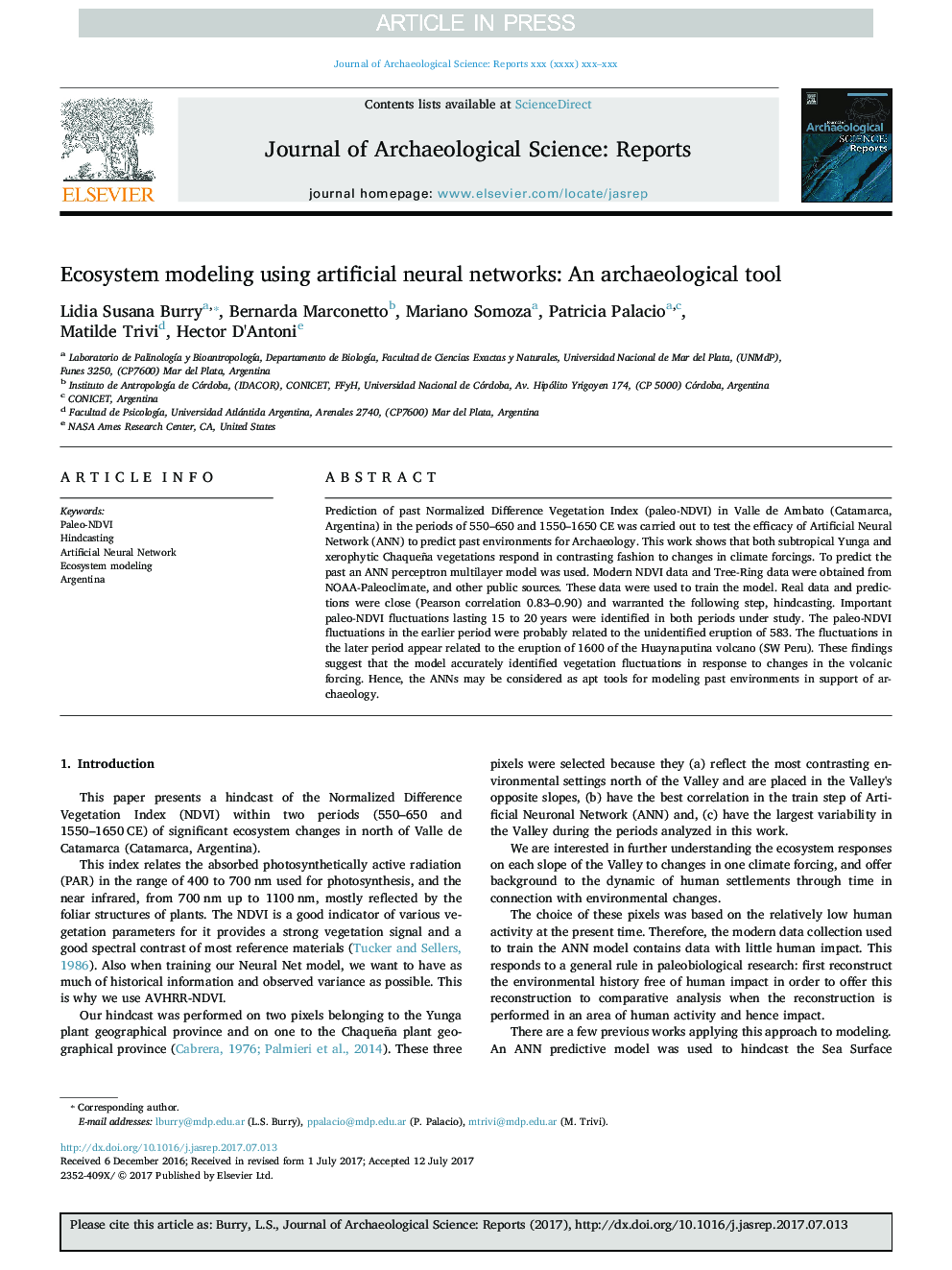| کد مقاله | کد نشریه | سال انتشار | مقاله انگلیسی | نسخه تمام متن |
|---|---|---|---|---|
| 7444390 | 1483925 | 2018 | 8 صفحه PDF | دانلود رایگان |
عنوان انگلیسی مقاله ISI
Ecosystem modeling using artificial neural networks: An archaeological tool
ترجمه فارسی عنوان
مدل سازی اکوسیستم با استفاده از شبکه های عصبی مصنوعی: یک ابزار باستان شناسی
دانلود مقاله + سفارش ترجمه
دانلود مقاله ISI انگلیسی
رایگان برای ایرانیان
کلمات کلیدی
موضوعات مرتبط
علوم انسانی و اجتماعی
علوم انسانی و هنر
تاریخ
چکیده انگلیسی
Prediction of past Normalized Difference Vegetation Index (paleo-NDVI) in Valle de Ambato (Catamarca, Argentina) in the periods of 550-650 and 1550-1650Â CE was carried out to test the efficacy of Artificial Neural Network (ANN) to predict past environments for Archaeology. This work shows that both subtropical Yunga and xerophytic Chaqueña vegetations respond in contrasting fashion to changes in climate forcings. To predict the past an ANN perceptron multilayer model was used. Modern NDVI data and Tree-Ring data were obtained from NOAA-Paleoclimate, and other public sources. These data were used to train the model. Real data and predictions were close (Pearson correlation 0.83-0.90) and warranted the following step, hindcasting. Important paleo-NDVI fluctuations lasting 15 to 20Â years were identified in both periods under study. The paleo-NDVI fluctuations in the earlier period were probably related to the unidentified eruption of 583. The fluctuations in the later period appear related to the eruption of 1600 of the Huaynaputina volcano (SW Peru). These findings suggest that the model accurately identified vegetation fluctuations in response to changes in the volcanic forcing. Hence, the ANNs may be considered as apt tools for modeling past environments in support of archaeology.
ناشر
Database: Elsevier - ScienceDirect (ساینس دایرکت)
Journal: Journal of Archaeological Science: Reports - Volume 18, April 2018, Pages 739-746
Journal: Journal of Archaeological Science: Reports - Volume 18, April 2018, Pages 739-746
نویسندگان
Lidia Susana Burry, Bernarda Marconetto, Mariano Somoza, Patricia Palacio, Matilde Trivi, Hector D'Antoni,
